Mexico is a popular travel destination for American tourists—and it’s easy to see why. Not only is the country a nearby neighbor (and just a direct flight away from Americans in large metropolitan areas), but Mexico is brimming with beautiful beaches, incredible historical sites, and vibrant cultural experiences. In fact, an incredible 12.8 million Americans visited Mexico in 2019 alone.
But you’re not alone if you ask yourself “Is it safe to visit Mexico?” before you plan your next vacation. The US Department of State has issued a travel advisory for Americans traveling to Mexico, which includes a list of five Mexican states that should be avoided completely due to crime and kidnapping concerns, some that they recommend reconsidering travel to, and a third list where they recommend exercising increased caution.
While popular tourist destinations like Cabo San Lucas, Puerto Vallarta, Playa del Carmen, Tulum, and Riviera Maya have historically been considered safer than other parts of Mexico, it’s hard to avoid news headlines about the potential dangers of Mexico.
However, Mexico is a big country, and much of the violence that makes the news is limited to specific areas, including border regions. With some common sense and thoughtful planning, savvy travelers can easily enjoy a safe trip to Mexico.
Why Visit Mexico?
Mexico isn’t just a country close by; it’s a gateway to a tapestry of experiences. With its white sand beaches, ancient Mayan ruins, and vibrant art scenes, the country offers a diverse range of attractions that cater to beach lovers, history enthusiasts, and art aficionados alike. This rich blend makes cities like Mexico City, a UNESCO World Heritage Site, and Oaxaca City with its historic cultural sites, magnets for those seeking a journey steeped in culture and history.
Safety Concerns and Realities
While the charm of Mexico’s beach towns and the historic center of cities like Mexico City are undeniable, safety concerns do exist. The U.S. Department of State regularly updates travel advisories that classify regions in Mexico, advising tourists to exercise safety precautions in certain areas due to crime and kidnapping risks.
However, popular tourist destinations such as Puerto Vallarta and San Miguel de Allende remain on the list of safest cities, often celebrated for their low crime rates compared to other cities. It’s crucial for travelers to look beyond the headlines and understand the context of these advisories, recognizing that much of Mexico offers a safe and welcoming environment for tourists.
Understanding Safety in Mexico
Mexico’s reputation as a safe tourist destination is supported by various safety rankings and reports from both the Mexican government and independent agencies. These reports often highlight the safest beach towns and major cities, with areas like Playa del Carmen and the magical town of Tulum being noted for their low violent crime rates.
Travelers should remain vigilant, especially in lesser-known regions or when exploring secluded tropical destinations. By staying informed about the latest crime statistics and trends, tourists can make better decisions about where to travel within the country.
General Safety Tips for Travelers
Ensuring a safe trip to Mexico involves more than just choosing the right destination. Travelers should exercise basic safety measures like staying aware of their surroundings and keeping personal belongings secure to avoid petty crimes. It’s also wise to follow practical advice such as traveling in groups, especially in less touristy areas or after dark. Another important aspect of travel safety is obtaining travel insurance, which can provide reassurance and support in the event of unexpected incidents.
Mexican Cities where you can travel safely
So, what’s a Mexico-loving traveler to do? While no destination is completely safe—including your hometown—there are many parts of Mexico that remain pretty safe for tourists. So, when you’re planning your itinerary, consider sticking to tourist-friendly destinations that are considered safe. Here’s a list of five of our favorites.
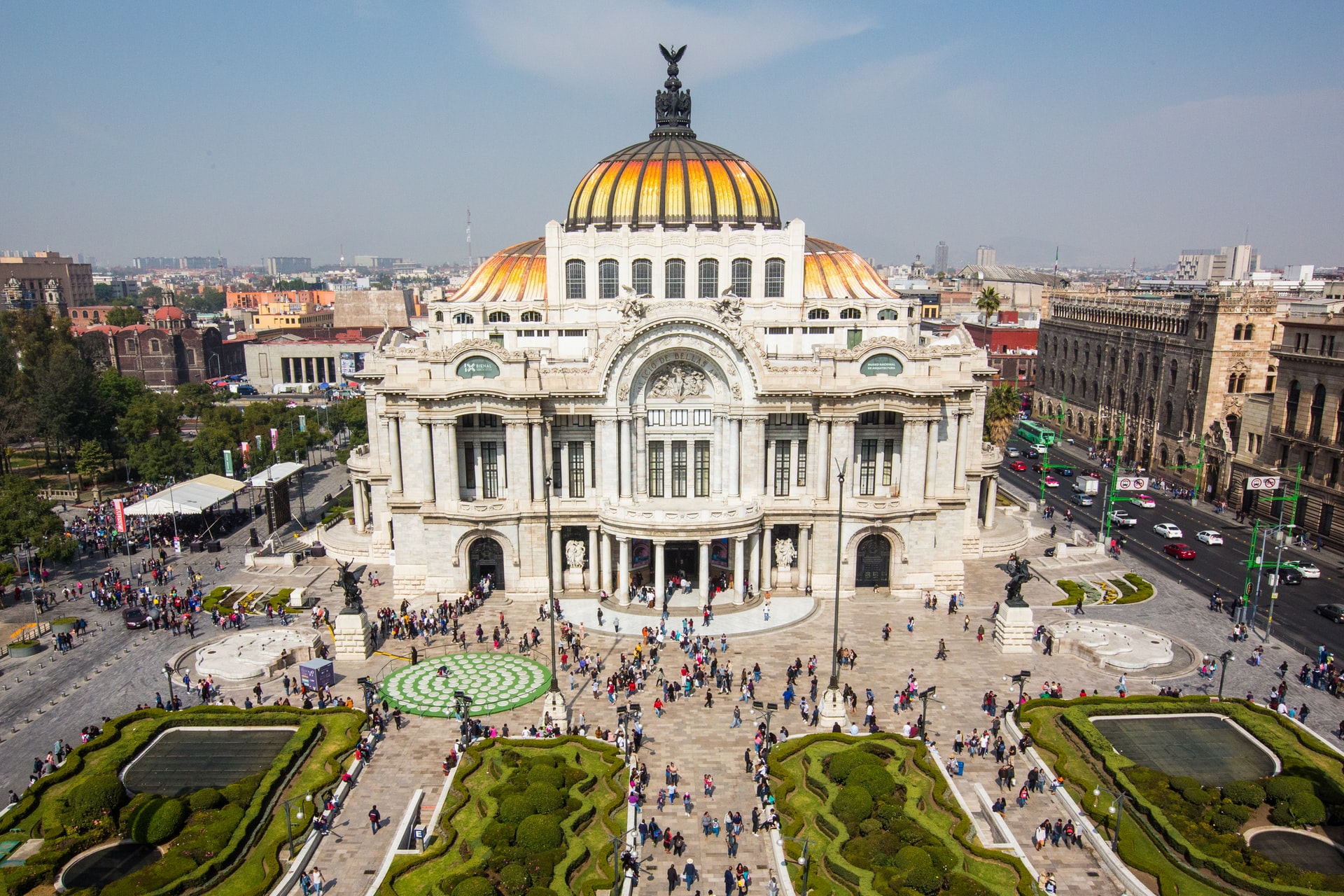
Mexico City
Mexico City has long had a reputation as being unsafe, but thanks to a crackdown on petty crimes over the last decade and one of the highest police officer-to-resident ratios in the world, Mexico City is no more dangerous than most major cities in the United States.
As the capital of the country and the biggest city in North America by population, Mexico City is a dynamic destination that’s simply bursting with culture. Be sure to leave yourself enough time to explore some of the city’s most important sites, like the Zocalo (Main Square) located in the historic center; the Templo Mayor, an Aztec temple located right within the city; and the National Anthropology Museum, where you could spend multiple days checking out the many indigenous cultures and civilizations of Mexico, including the famous Sun Stone.
Safety Improvements Over the Years
In response to concerns over safety, Mexico City has dramatically enhanced its security measures. Today, the city boasts one of the highest police officer-to-resident ratios globally, making it as safe as many major cities across the United States. These efforts have played a vital role in changing perceptions and reassuring both tourists and residents about their safety in this bustling metropolis.
Must-See Attractions
When visiting Mexico City, there are several landmarks that you simply cannot miss:
- Zocalo (Main Square): Known as the heart of the historic center, the Zocalo is surrounded by landmarks like the majestic Metropolitan Cathedral and the National Palace. It’s a vibrant meeting place filled with cultural activities and historical significance.
- Templo Mayor: This ancient Aztec temple, discovered just a few decades ago beneath the city center, offers a fascinating glimpse into Mexico’s pre-Hispanic past. Located beside the Zocalo, it’s a must-visit for anyone interested in the rich history of the region.
- National Anthropology Museum: This world-class museum is home to an extensive array of artifacts from Mexico’s indigenous cultures, including the iconic Sun Stone or Aztec calendar. The museum’s vast collection and beautifully curated exhibits make it a place where one could easily spend days exploring.
Travel Tips Specific to Mexico City
The city’s public transport network is extensive and generally safe. However, it’s advisable to avoid rush hour crowds, keep your belongings secure, and be aware of your surroundings. Using apps like Uber can also be a safer and more convenient option for getting around.
Areas such as Polanco, Condesa, and Roma are known for their safety, vibrant nightlife, and tourist-friendly atmosphere. These neighborhoods offer a mix of charming cafes, art galleries, and shops, making them ideal for tourists seeking both safety and an authentic experience of the city.
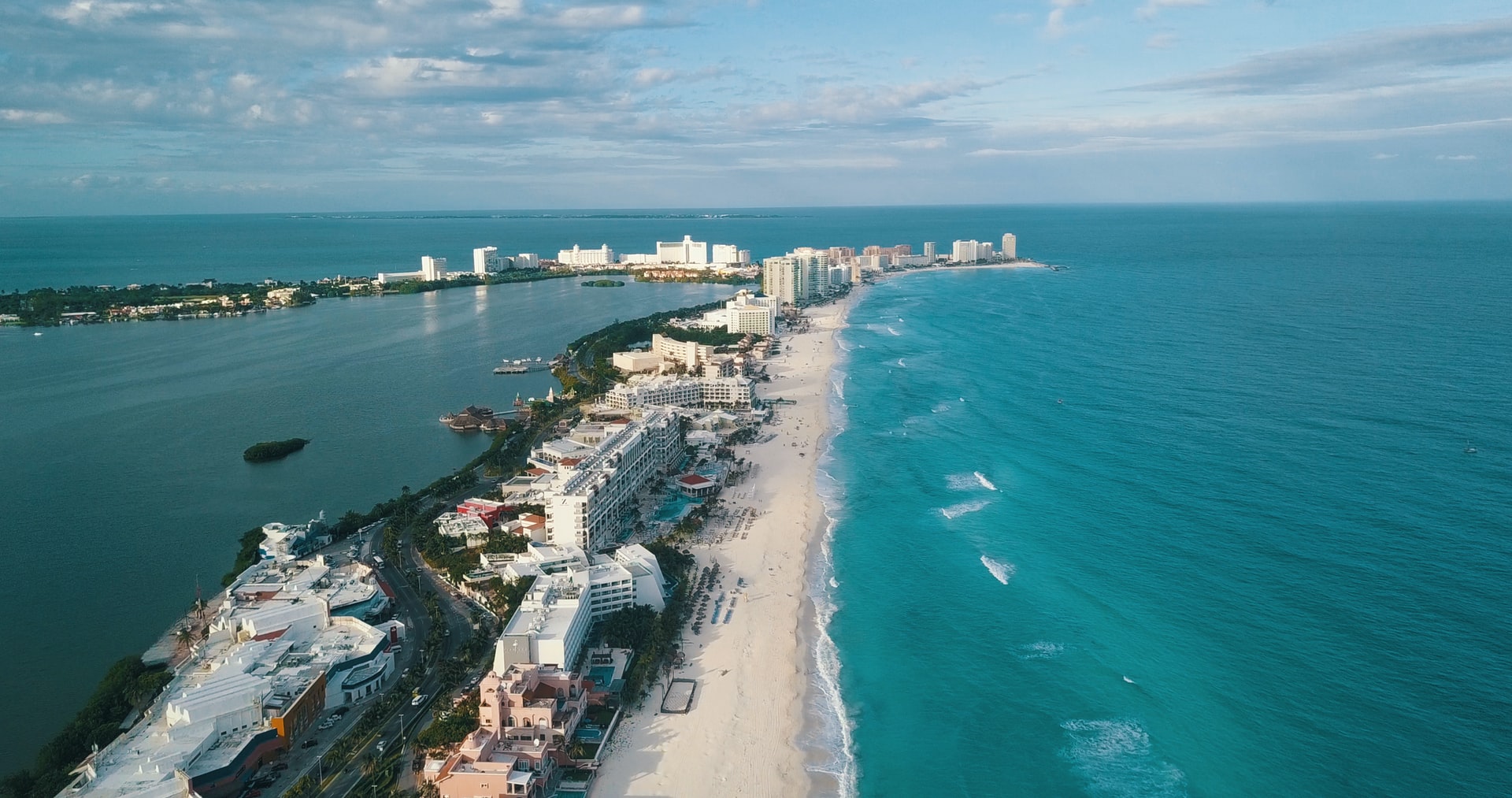
Cancun
For a beach vacation, nowhere is quite as tempting as Cancun’s white sand beaches. And, as one of Mexico’s best developed tourist destinations, there’s a modern travel infrastructure and more hotels, great restaurants, bars, shops, and attractions than you could explore in a lifetime. If you can tear yourself away from the postcard-perfect beaches for a day, consider renting a car and visiting the famous ruins at Chichen Itza and Tulum, the former of which is designated a UNESCO World Heritage Site.
Why Cancun is Safe for Tourists
Cancun’s reputation as a safe city is largely due to its extensive tourist infrastructure and robust security measures. The local government and tourism industry have invested heavily in safety protocols to ensure that visitors can enjoy their vacation without concerns. The well-patrolled Hotel Zone is particularly notable for its comprehensive security features, which include surveillance cameras and a strong police presence, providing an added layer of safety for tourists.
Top Attractions
Cancun is synonymous with stunning white sand beaches that attract beach lovers from around the world. Beyond the beaches, Cancun serves as an excellent base for day trips to remarkable historical sites. The ruins at Chichen Itza, a UNESCO World Heritage Site, offer a glimpse into the ancient Mayan civilization. Nearby, the ruins of Tulum boast a spectacular oceanfront vista, making it a unique archaeological site that combines history with scenic beauty.
Travel Tips Specific to Cancun
For getting around Cancun, options like reputable taxi companies, secure rental cars, and organized tours ensure reliable and safe transportation. Tourists are advised to pre-book their transport services when possible to avoid any inconvenience.
While Cancun’s nightlife is one of its biggest draws, visitors should stick to well-known clubs and bars in the Hotel Zone. As for beach safety, it’s important to follow local guidelines and swim in designated areas to ensure a safe and enjoyable experience.
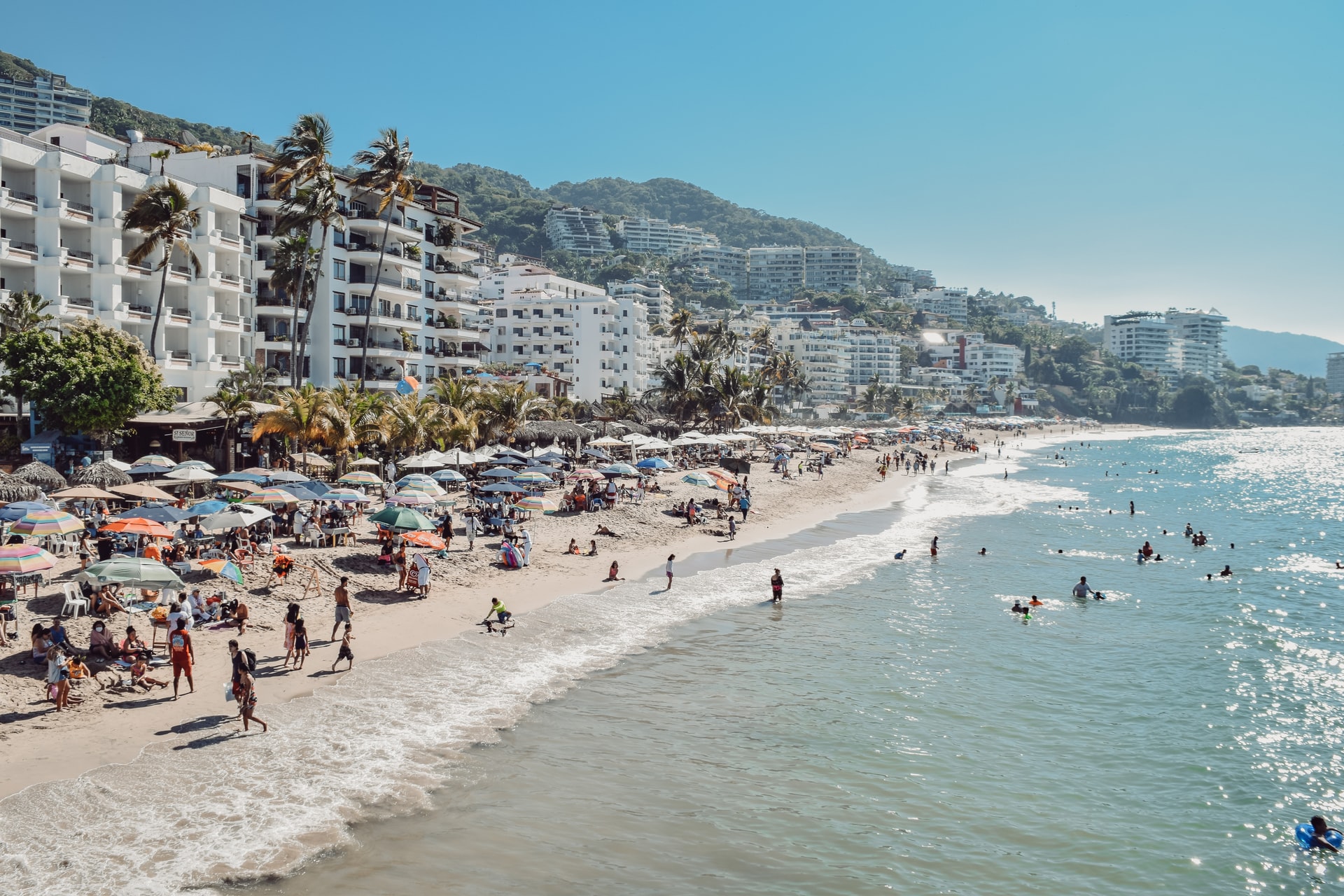
Puerto Vallarta
Located on the Pacific Ocean side of Mexico in the state of Jalisco, Puerto Vallarta has long been one of the most popular resort destinations for American travelers and is known to be one of the safest places in Mexico. Puerto Vallarta is popular with all kinds of travelers, from honeymooners to families to LGBT visitors—Puerto Vallarta is known as one of Mexico’s most welcoming destinations.
Under sunny skies, visitors to Puerto Vallarta lounge on beautiful beaches; wander the Malecon, stopping in shops and galleries along the way; indulge in delicious Mexican cuisine, including plenty of Pacific seafood; and surround themselves with incredible natural beauty in protected wildlife areas that surround the city.
Safety Profile of Puerto Vallarta
Puerto Vallarta stands out as one of the safest cities in Mexico, thanks to its effective community policing and dedicated tourist security measures. The city’s approach to safety is proactive, with local authorities and businesses working collaboratively to maintain a secure environment for all visitors. This commitment has resulted in consistently low crime rates, especially in comparison to other regions, allowing tourists to relax and enjoy their stay with peace of mind.
Must-Do Activities
Puerto Vallarta offers a rich array of activities that highlight its natural beauty and cultural vibrancy:
- Exploring the Malecon: This iconic boardwalk is a hub of activity where art, culture, and commerce come together. Visitors can enjoy sculptures, street performances, and breathtaking views of the Pacific Ocean.
- Beach and Ocean Activities: With its stunning coastlines, Puerto Vallarta is perfect for a variety of water sports and beach activities. From snorkeling in the crystal-clear waters to relaxing on the sun-soaked sands, there’s something for every beach enthusiast.
- Local Cuisine and Markets: Puerto Vallarta’s markets and restaurants offer an authentic taste of Mexican culinary traditions. Sampling local dishes, especially the fresh Pacific seafood, is a must for any food lover visiting the city.
Travel Tips Specific to Puerto Vallarta
Known for its inclusive atmosphere, Puerto Vallarta is celebrated as one of Mexico’s most LGBTQ-friendly destinations. The city is a popular destination for bars, clubs, and events that cater to the LGBTQ community, making it a welcoming space for diverse visitors.
While Puerto Vallarta is notably safe, it’s always wise for travelers to remain vigilant, especially in crowded tourist areas. Sticking to well-lit paths, keeping an eye on personal belongings, and staying informed about local safety advisories will help ensure a secure visit.
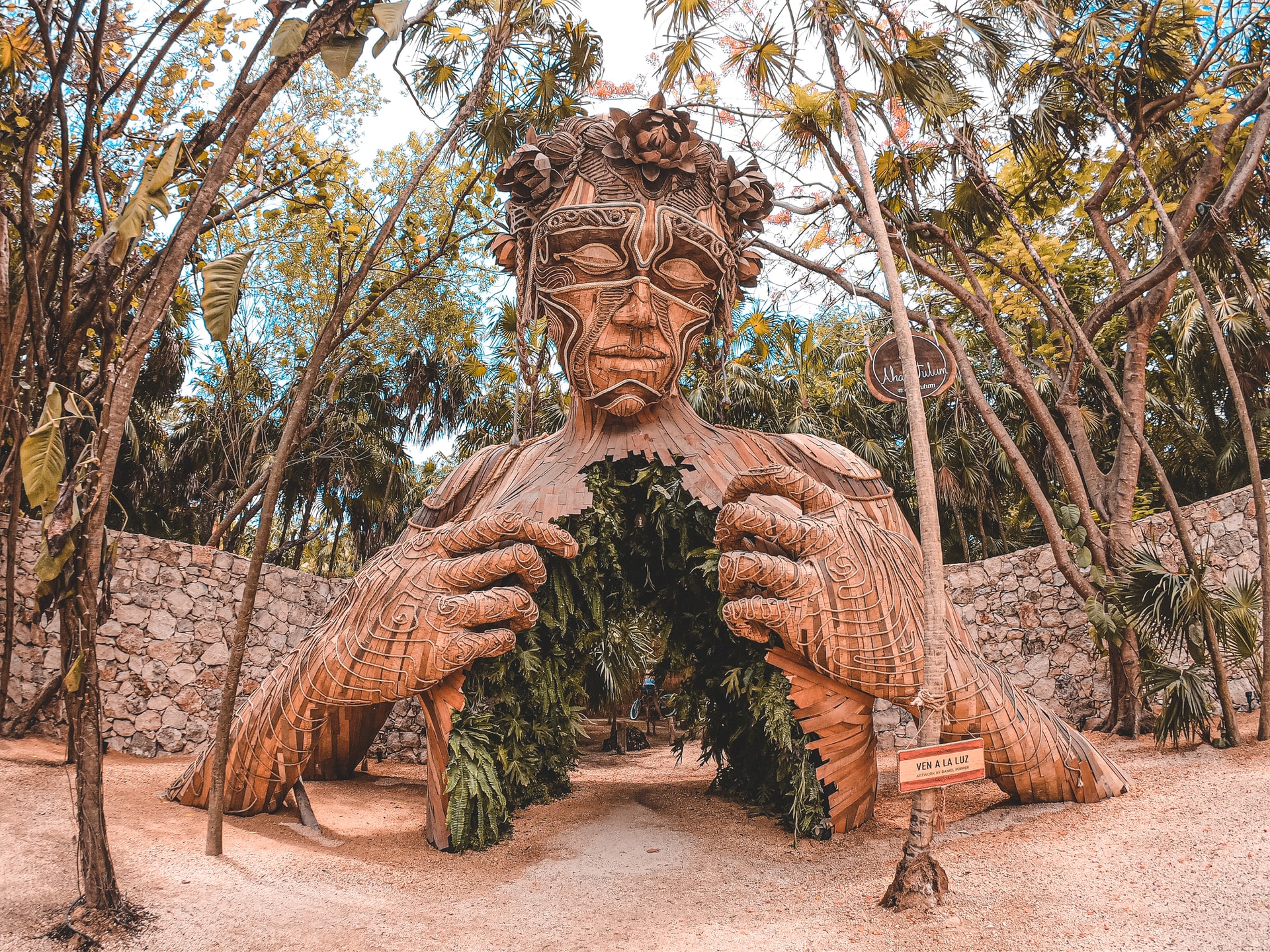
Tulum
Located on the Caribbean Sea in the state of Quintana Roo, Tulum has risen in popularity among travelers recently, and for good reason. With gorgeous white sand beaches, amazing hotels, world-class cuisine, and a vibrant nightlife scene, Tulum has all the makings of a great vacation. It’s popular with both young adventure travelers and cruisers, who arrive in nearby Cozumel’s busy cruise port. Plus, no trip to Tulum is complete without a visit to the famous ancient walled city of the same name—these Mayan ruins are nestled right on the coast and are a true archeological wonder.
Safety in Tulum
As Tulum’s popularity as a tourist destination has soared, so have the efforts to ensure visitors’ safety. The local authorities have implemented several security measures aimed at protecting the tourists flocking to the area. Despite the growth, Tulum maintains a commendable safety record compared to other popular destinations in Mexico and the Caribbean. Visitors typically find Tulum to be a safe place where they can relax and explore without undue concern.
Highlight Attractions
Tulum is home to several must-see attractions that make it a unique vacation spot:
- Ancient Mayan Ruins: The ruins of Tulum stand majestically along the coast, offering a picturesque blend of historical significance and natural beauty. This ancient walled city is not only a significant archaeological site but also provides stunning views of the Caribbean Sea.
- Stunning Beaches and Nightlife: Tulum’s beaches are famed for their clear turquoise waters and white sands, making them a paradise for beach lovers. As the sun sets, the town comes alive with a vibrant nightlife scene that appeals to a diverse crowd, from luxury travelers to backpackers.
Travel Tips Specific to Tulum
While Tulum is generally safe, it’s wise to take extra precautions during nighttime. Stick to well-lit and popular areas when enjoying the nightlife, and always travel in groups if possible. Petty crime can be a concern in any tourist area, including Tulum. Keep your valuables secure and out of sight, use hotel safes when available, and be cautious with your belongings in crowded places.
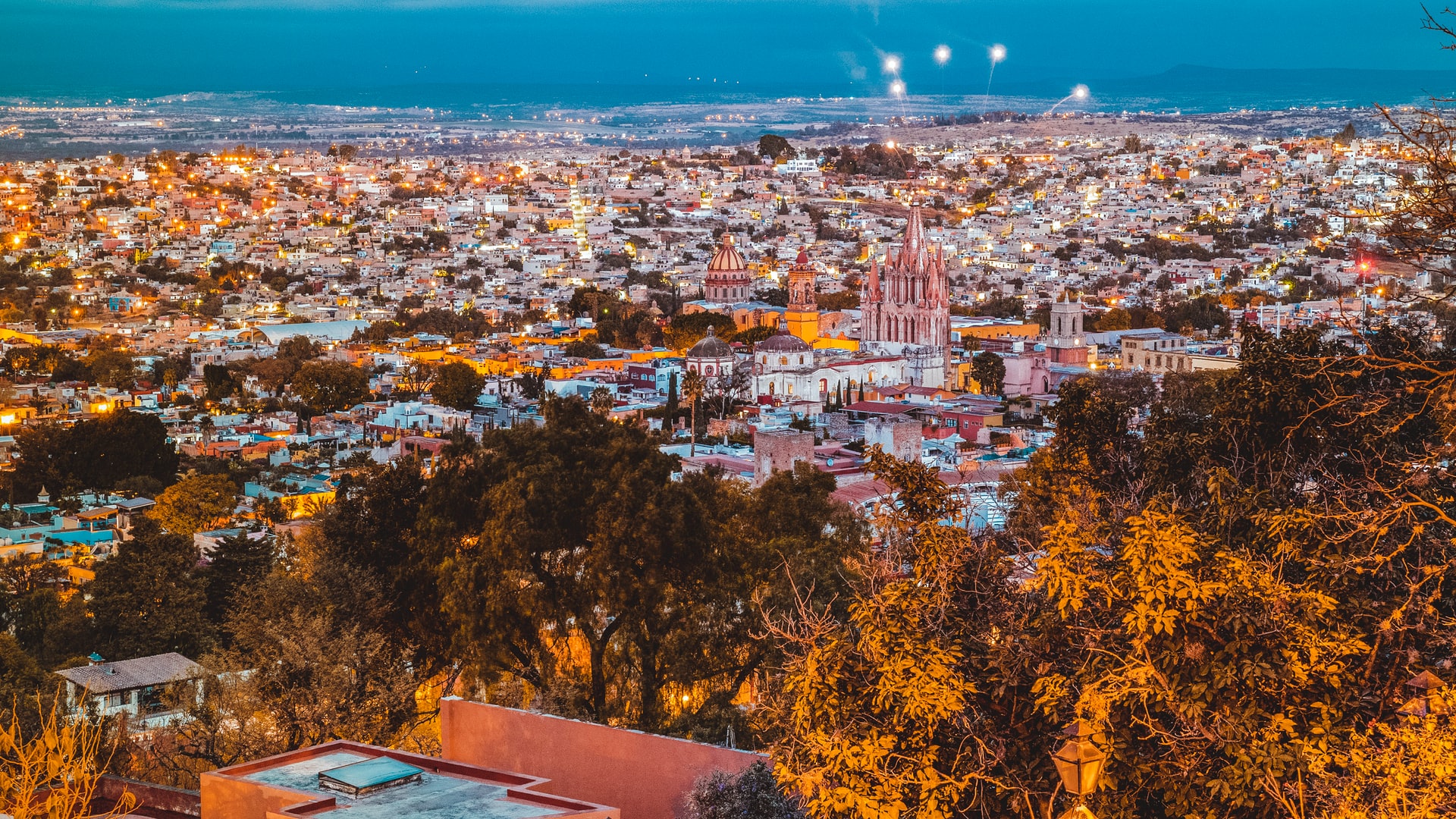
San Miguel de Allende
Known as one of the most beautiful cities in Mexico, San Miguel de Allende in the state of Guanajuato is a popular and safe destination for American tourists. In fact, many visitors stay and never leave! San Miguel de Allende is a popular city for expats and American retirees.
The city is known for its colorful streets, friendly local markets, and Spanish colonial churches. A relatively small town of roughly 175,000 people, San Miguel de Allende is best explored on foot. Spend leisurely days wandering its cobblestone streets, making sure to stop at the famous Parroquia de San Miguel Arcangel church, the 17th-century pink Gothic church located in the town’s main square. Venture outside of town to experience beautiful botanical gardens and relaxing hot springs.
Why San Miguel de Allende is Considered Safe
San Miguel de Allende’s reputation as a safe destination is reinforced by its strong expat community and remarkably low crime rates. The presence of many American retirees and expats contributes to a secure and well-monitored environment. The town’s friendly local atmosphere also plays an essential role, as residents are generally welcoming and helpful to tourists, creating a communal sense of security and trust.
Cultural and Historical Sites
San Miguel de Allende is a cultural gem with several must-visit sites that showcase its rich history and aesthetic beauty:
- Parroquia de San Miguel Arcangel: This iconic pink Gothic church dominates the town’s main square and is a masterpiece of colonial architecture, drawing visitors from around the world.
- Botanical Gardens and Hot Springs: Just outside the city, the botanical gardens offer a tranquil escape with native plants and scenic walking paths, while nearby hot springs provide a perfect setting for relaxation and rejuvenation.
Travel Tips Specific to San Miguel de Allende
The city is best explored on foot, and there are many safe and scenic routes through its cobblestone streets. Stick to well-traveled paths and consult local maps or your hotel for the best routes. Engaging with locals and other tourists can also enhance your visit. The local community is known for being open and friendly, offering an opportunity to learn more about the city’s culture and history directly from its residents.
More Tips for traveling safely in Mexico
Just like you would with any other destination, it’s important to use common sense when you’re traveling in any Mexican city. Too many tourists let their guard down when they’re on vacation, and that’s when problems happen. Here are a few travel tips:
Be aware of your surroundings: Stay in populated areas and exercise extreme caution at banks and ATMs. Don’t walk alone at night. If you’re renting a car to drive between cities, stick to main roads.
Don’t make yourself a target for petty theft: Avoid traveling with expensive items like jewelry and electronics. Always keep your passport in a safe. Be especially careful of pickpockets on crowded public transportation.
Be careful when drinking: Many cities in Mexico have great nightlife, but be vigilant. Keep your drink in front of you and never accept drinks from strangers.
Stick to licensed taxi drivers, cab companies, and tour operators. Never get in a car without checking credentials.
Simply put, just use the same common sense you would when traveling in a large city in the United States! And, in case the unexpected does happen, be sure you have a travel insurance policy that covers everything from lost and stolen luggage to emergency medical care. Then, go enjoy a wonderful time exploring everything Mexico has to offer.
FREQUENTLY ASKED QUESTIONS
Is Mexico Safe for Solo Travelers?
Yes, Mexico can be safe for solo travelers, especially when visiting popular tourist destinations like Cancun, Puerto Vallarta, and Tulum, which have well-established tourist infrastructures and security measures. Solo travelers should stay informed about the areas they plan to visit, stick to well-populated areas, and follow general travel safety precautions.
What Are the Safest Areas to Stay in Mexico City?
In Mexico City, neighborhoods such as Polanco, Condesa, Roma, and the historic center are considered safe and popular among tourists. These areas are well-patrolled and have a lot of amenities, making them ideal for visitors.
How Can I Stay Safe on Mexican Beaches?
To stay safe on Mexican beaches, choose well-known and busy beaches, especially those that are part of or close to reputable resorts. Always follow local guidelines, such as swimming in designated areas and paying attention to lifeguard warnings. Avoid bringing valuable items to the beach to reduce the risk of theft.
What Should I Do in Case of an Emergency?
In case of an emergency in Mexico, call 911. It is also advisable to have the contact information for your country’s embassy or consulate on hand, as well as local emergency services.
Is It Safe to Drive in Mexico?
Driving in Mexico can be safe, but it requires caution. Stick to toll roads (autopistas) when possible, as they are better maintained and more secure. Avoid driving at night, and always use GPS or a reliable map. Be aware that your US auto insurance generally won’t cover you in Mexico. Mexican auto rentals are required to include liability insurance as part of the rental cost. Coverage for damage to the car may be purchased as part of a travel insurance package.
Are There Safe Public Transport Options in Mexico?
Public transportation in major cities and tourist areas in Mexico is generally safe. For longer distances, consider using reputable bus companies. In cities, metro systems and official taxi services or ride-sharing apps are reliable and safe options.
What Precautions Should I Take When Dining Out?
When dining out in Mexico, choose restaurants that are busy and have good reviews. It’s generally safe to eat at places that are popular with locals and tourists alike. Always drink bottled or purified water, and ensure that raw fruits and vegetables are washed with purified water.
How Can I Protect Myself from Pickpockets?
To protect yourself from pickpockets, keep your belongings secure and close to your body. Consider using a money belt or a crossbody bag that zips closed. Be especially cautious in crowded places, such as markets, public transport, and tourist landmarks.
Is It Safe to Use ATMs in Mexico?
Using ATMs in Mexico is relatively safe, especially when using machines that are located inside banks, shopping malls, or other secure locations. Avoid using ATMs at night or in deserted areas. Always be aware of your surroundings when withdrawing money.
What Should I Know About Local Laws and Customs?
Understanding local laws and customs is crucial for a safe and respectful visit to Mexico. Be aware of dress codes in religious or traditional settings, and always ask permission before photographing people. It’s also important to know that drinking alcohol on the streets is generally illegal, and driving under the influence of alcohol carries severe penalties.

How safe is Mexico City?
As the largest city in North America, Mexico City is bursting with unforgettable travel experiences, from an incredible array of world-class museums and cultural experiences

What’s the climate in Canada like?
Canada is a vast country which rightly has a reputation for cold and snowy weather. Its northern latitude positioning and the presence of the massive
The past few years have heightned the interest in travel
- Source
